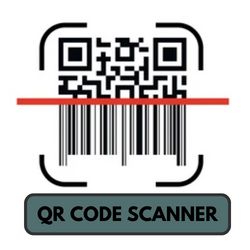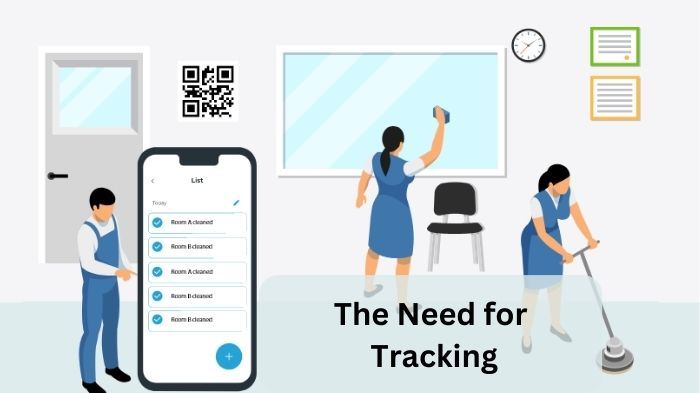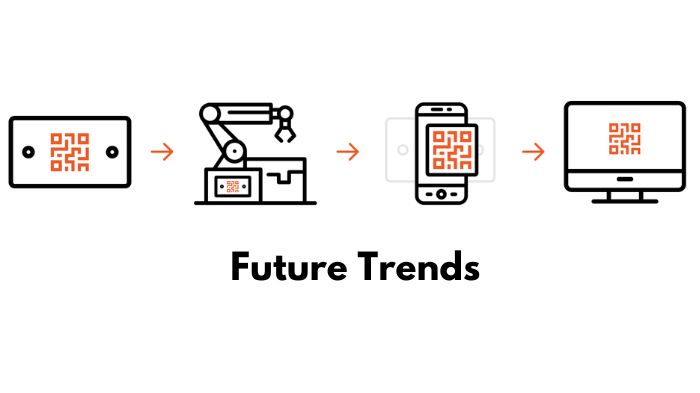
QR codes, those pixelated squares, have come a long way since their inception. Originally designed for tracking automotive parts, QR codes are now ubiquitous, finding applications in marketing, healthcare, and various industries. One of the key elements that have propelled QR codes into the mainstream is their ability to be tracked, providing invaluable insights for businesses and marketers.
Definition of QR Code
QR codes, or Quick Response codes, are two-dimensional barcodes capable of storing information. They were created in 1994 by Denso Wave, a subsidiary of Toyota, for tracking automotive parts during manufacturing.
Evolution of QR Codes
From their industrial origins, QR codes evolved into versatile tools, breaking into commercial and consumer spaces. The adoption of smartphones played a pivotal role in making QR codes accessible to the general public.
Significance of QR Code Tracking
QR code tracking involves monitoring and analyzing the interactions users have with QR codes. This article explores the multifaceted aspects of QR code tracking, from its mechanics to its wide-ranging applications.
Understanding QR Codes
How QR Codes Work
QR codes encode data in both the vertical and horizontal directions, allowing for a larger amount of information to be stored compared to traditional barcodes. This section delves into the technicalities of QR code functioning.
Types of QR Codes
- Static QR Codes
- Static QR codes contain fixed information and do not change over time. They are suitable for one-time use scenarios, like a link to a website.
- Dynamic QR Codes
- Dynamic QR codes, on the other hand, enable the modification of the encoded data even after the code has been generated. This flexibility is advantageous for various applications, especially in marketing campaigns.
Common Applications
Exploring the diverse ways QR codes are used, from accessing websites and making payments to storing contact information.
The Need for Tracking

Tracking in Marketing
For marketers, understanding user engagement is crucial. QR code tracking provides valuable data on how, when, and where users interact with marketing materials.
Enhancing User Engagement
Tracking allows businesses to tailor their content based on user behaviour, optimizing engagement and conversion rates.
Importance for Business Analytics
Beyond marketing, businesses can leverage QR code tracking for comprehensive analytics, aiding in strategic decision-making.
Benefits of QR Code Tracking
Real-time Data Collection
The ability to collect data in real-time empowers businesses to make immediate adjustments to their strategies based on user responses.
Improved Customer Interaction
QR code tracking fosters a deeper understanding of customer preferences, enabling personalized interactions that resonate with the target audience.
Enhanced Marketing Strategies
Utilizing tracked data, marketers can refine and optimize their strategies, ensuring a higher return on investment.
QR Code Tracking Tools
Overview of Popular Tools
Exploring the landscape of QR code tracking tools, including both QR code generators and analytics platforms.
Choosing the Right Tool for Your Needs
Selecting the appropriate tool depends on the specific requirements of a campaign or business. Factors such as ease of use, analytics features, and integration capabilities play a crucial role in decision-making.
Implementing QR Code Tracking
Step-by-Step Guide
- Creating a Dynamic QR Code
- A detailed walkthrough on generating dynamic QR codes, emphasizing customization options for branding purposes.
- Integrating with Analytics
- Guidance on seamlessly integrating QR code tracking with analytics platforms to ensure comprehensive data collection.
Best Practices for Implementation
- Customization Options
- Highlighting the importance of customized QR codes for branding and user recognition.
- Security Measures
- Addressing potential security concerns and implementing measures to safeguard user data and privacy.
Case Studies
Successful QR Code Tracking Campaigns
Examining real-world examples of successful QR code tracking campaigns, and analyzing the strategies that contributed to their success.
Lessons Learned from Failures
Learning from unsuccessful campaigns is equally important. Case studies on failures provide insights into pitfalls to avoid.
Analyzing Impact on Businesses
Quantifying the impact of QR code tracking on businesses, from increased sales to improved customer loyalty.
Future Trends in QR Code Tracking

Technological Advancements
- AI Integration
- Exploring how artificial intelligence can enhance QR code tracking capabilities, from predictive analytics to advanced user behaviour analysis.
- Enhanced Security Features
- Anticipating the integration of cutting-edge security measures to address evolving threats and concerns.
Emerging Industry Applications
Identifying new sectors and industries where QR code tracking is expected to play a pivotal role in the coming years.
Challenges and Solutions

Security Concerns
Addressing the potential vulnerabilities associated with QR code tracking and proposing solutions to mitigate risks.
User Privacy Issues
Navigating the delicate balance between tracking for analytics and respecting user privacy, with an emphasis on transparency.
Overcoming Technological Limitations
Acknowledging the current limitations of QR code tracking technology and exploring avenues for improvement.
QR Code Tracking in E-commerce
Revolutionizing Online Shopping
Examining how QR code tracking is reshaping the e-commerce landscape, from product discovery to post-purchase interactions.
Improving Supply Chain Management
Highlighting the role of QR code tracking in optimizing supply chain processes, reducing errors, and enhancing efficiency.
Customer Retention Strategies
Utilizing QR code tracking data for developing personalized customer retention strategies in the competitive e-commerce space.
QR Code Tracking in Health and Safety
Contact Tracing Applications
Analyzing the pivotal role of QR codes in contact tracing during health crises and pandemics.
Vaccine Distribution Management
Exploring how QR code tracking facilitates efficient vaccine distribution, ensuring a seamless and organized process.
Ensuring Public Safety
Discussing the broader implications of QR code tracking in maintaining public safety, especially during health emergencies.
QR Code Tracking and Sustainability
Reducing Environmental Impact
Highlighting the environmentally friendly aspects of QR codes, especially in comparison to traditional paper-based tracking methods.
Paperless Ticketing Solutions
Examining the shift towards paperless ticketing, reducing waste and contributing to a more sustainable event industry.
Green Practices in Marketing
Exploring how QR code tracking aligns with green marketing practices, appealing to environmentally conscious consumers.
Legal and Ethical Considerations
Privacy Regulations
Navigating the complex landscape of privacy regulations and compliance requirements related to QR code tracking.
Consent and Transparency
Emphasizing the importance of obtaining user consent and maintaining transparency in QR code tracking practices.
Ensuring Responsible Use
Advocating for responsible use of QR code tracking, balancing business objectives with ethical considerations.
Comparing QR Code Tracking with Alternatives
NFC Technology
Comparing QR code tracking with Near Field Communication (NFC) technology, QR codes can be accessed from a distance using a smartphone and do not need direct contact with the device to access the content. QR codes are also scannable when printed and displayed online, allowing you dual-platform marketing.NFC technology has a radius of a mere 4 cm and cannot be accessed from afar. Moreover, the data can only be accessed by tapping the NFC tag using the NFC-enabled smartphone device.
Bluetooth Tracking
Exploring the feasibility and effectiveness of Bluetooth tracking as an alternative to QR code tracking. It has low power consumption. It is useful for small-size data transfer. BLE (Bluetooth Low Energy) devices are robust enough to operate. BLE is cost-effective especially compared to RFID. Almost every smartphone has pre-installed Bluetooth.
Pros and Cons of Each Approach
Providing a comprehensive overview of the advantages and disadvantages of QR code tracking, NFC, and Bluetooth tracking.
Training and Education on QR Code Tracking
Educating Businesses and Consumers
Stressing the importance of educating both businesses and consumers on the benefits and best practices of QR code tracking. Educating others about QR codes and their applications will open different possibilities in the business and administration fields.
Workshops and Webinars
Promoting the use of workshops and webinars as effective tools for disseminating knowledge on QR code tracking. People sharing their experiences and troubles come together for a better cause. Workshops are a great way to experience the outcomes of a new technology introduced.
Bridging the Knowledge Gap
Addressing the existing knowledge gap and promoting initiatives to bridge it, ensuring widespread understanding and adoption.
Global Adoption of QR Code Tracking
Regional Variances
Analyzing how different regions approach and adopt QR code tracking, considering cultural, technological, and regulatory factors.
Cultural Acceptance
Examining the cultural attitudes towards QR code tracking and its impact on adoption rates.
Government Initiatives
Highlighting government initiatives that encourage or regulate the use of QR code tracking in various regions.
QR Code Tracking for Small Businesses
Cost-Effective Solutions
Showcasing budget-friendly QR code tracking solutions suitable for small businesses.
DIY Implementation
Empowering small business owners with the knowledge and tools to implement QR code tracking independently.
Showcasing Success Stories
Sharing success stories of small businesses that have leveraged QR code tracking effectively.
Troubleshooting QR Code Tracking Issues
Common Problems
Identifying common issues encountered in QR code tracking and providing troubleshooting guidance.
Debugging Techniques
Equipping businesses and individuals with debugging techniques to resolve QR code tracking issues.
Seeking Professional Help
Recognizing situations where professional assistance may be necessary and guiding users on finding the right support.
Continuous Improvement Strategies
Feedback Loops
Stressing the importance of feedback loops in refining QR code tracking strategies and tools.
Upgrading Tracking Systems
Encouraging businesses to stay abreast of technological advancements and continuously upgrade their QR code tracking systems.
Staying Ahead of Technological Trends
Emphasizing the need for businesses to anticipate and embrace emerging technological trends in QR code tracking.
Conclusion
Recap of Key Points
Summarizing the essential insights from the article, emphasizing the importance of QR code tracking in various industries. QR Code Tracking is a useful technique, to track your QR Codes and compare the logistics in it.
Encouraging QR Code Adoption
Urging businesses and individuals to embrace QR code tracking as a powerful tool for enhancing efficiency and user engagement.
Final Thoughts on the Future of QR Code Tracking
Speculating on the future trajectory of QR code tracking, considering technological advancements, and evolving user preferences.
FAQs:
QR Code Tracking involves monitoring and analyzing the interactions users have with QR codes. It provides valuable insights into user behaviour, helping businesses and marketers optimize their strategies.
QR codes encode data in both the vertical and horizontal directions, allowing for a larger amount of information to be stored compared to traditional barcodes. They can store various types of data, including URLs, text, and contact information.
a. Static QR Codes: These contain fixed information and do not change over time, suitable for one-time use scenarios.
b. Dynamic QR Codes: These enable the modification of encoded data even after code generation, offering flexibility for various applications.
QR codes are used for a variety of purposes, including accessing websites, making payments, storing contact information, and facilitating marketing campaigns.
Tracking in marketing allows businesses to understand user engagement, tailor content based on user behaviour, and make data-driven decisions for more effective and targeted campaigns.
a. Real-time Data Collection: Enables businesses to collect data in real-time for immediate adjustments to strategies.
b. Improved Customer Interaction: Fosters a deeper understanding of customer preferences for personalized interactions.
c. Enhanced Marketing Strategies: Utilizing tracked data, marketers can refine and optimize their strategies for a higher return on investment.
There are various tools available, including QR code generators and analytics platforms. Choosing the right tool depends on specific campaign or business requirements.
Yes, creating a dynamic QR code is possible. The process involves selecting a dynamic QR code generator and following a step-by-step guide to customize the code for your specific needs.
a. Creating a Dynamic QR Code: Follow a step-by-step guide to generate a dynamic QR code, emphasizing customization options for branding.
b. Integrating with Analytics: Seamlessly integrate QR code tracking with analytics platforms to ensure comprehensive data collection.
a. Customization Options: Emphasize the importance of customized QR codes for branding and user recognition in many ways.
b. Security Measures: Address potential security concerns and implement measures to safeguard user data and privacy.